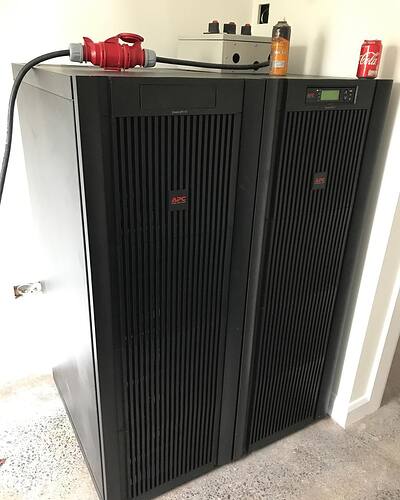Hi All,
Delighted to have stumbled across the OEM project, just exactly what I was looking for. I hope in time I can contribute. We run a small lighting company and have various things like a 3D printer farm, laser cutting, SMT assembly etc.
Here’s the background…For the last 5 years I’ve been stubbornly building our dream house by ourselves. Some images are attached. Now almost complete I’m turning my attention to the monitoring side of things. I’ve done a lot of reading, and think I’m now ready to ask some noob questions. Apologies for the length of this post!
For the sake of context here’s some info on the house:
- Mains supply is three phase with conventional (new) meter located outside the house in a metal feeder pillar.
- House wired on a three phase board, a feed from this runs a 15kva UPS, and the UPS output powers a second three phase board which runs all the critical stuff (lighting, fridges, network, CCTV etc).
- A separate plant room houses a hybrid heating system comprising an oil boiler, and NIBE 12kw GSHP. All the heating circuits are metered and run from separate circuits. The heat pump also has a Kampstrup meter fitted already.
- Heat loads are various underfloor circuits, radiators, DHW coil, swimming pool water-to-air heater, and pool heat exchanger.
- Currently we have 5.5kw of PV on a (3.6kw limited) inverter one one phase, mounted in the plant room. The end goal later this year is another two of these systems mounted on the garage, on the other two phases.
The overall concept is that we will be producing a lot of surplus solar, where possible we will run the heat pump, and use oil only for periods when 12kw of heat isn’t enough. I would like to divert excess PV into the DHW initially, then further excess can be dumped into the pool via a cheap in-line electric pool heater.
In terms of design I need to monitor the three phase input/meter in the feeder pillar. I therefore reckon I need the following:
EmonTX at meter position
*3x CT’s *
*1x AC 9v power supply/sensing *
1x Optical Pulse Counter
1x encapsulated temp sensor (for external temp - why not!)
Three Phase Firmware
I’m not a massive fan of RF where a wired connection is possible. I’m also not convinced this would like reliably back to the plant room. There’s a metal enclosure and a LOT of masonry in the way, distance about 30m. I’m therefore thinking to use a wired connection to the EmonPI GPIO?
Back in the plant room I’m thinking to mount the following:
EmonPI at sub-board
1x CT for solar PV inverter 1
1x CT for heat pump
1x 5v DC supply (no AC sensing as already done at meter position)
And later this year in the garage:
EmonTX at sub-board
1x CT for solar PV inverter 2
1x CT for solar PV inverter 3
Hopefully the above makes sense, now for my questions:
-
When I add my second EmonTX how should I connect this? Can I add a second wired EmonTX to the GPIO on the Pi? Or should I be trying to make the second one work on the RF as its a bit closer?
-
I would like to add two channels of diversion. Firstly a 3kw immersion heater in the DHW tank, and secondly an in-line electric pool heater. Both are in the plant room. I’ve read about the Mk2 and PLL Diverter. Could I ask what the latest approach is, and how I could handle two channels of diversion?
-
Again in terms of diversion can the system handle three phases of solar input when calculating diversion? Or should I be looking towards trying to consider diversion as separate systems? For example does the solar on phase 1 divert to the DHW heater on phase 1?
-
To what extent could I consider using OEM for my heating controls? It would seem a sensible approach since it knows a lot more about the system than anything else in the house. Good approach?
Many thanks in advance for your input,
Duncan




